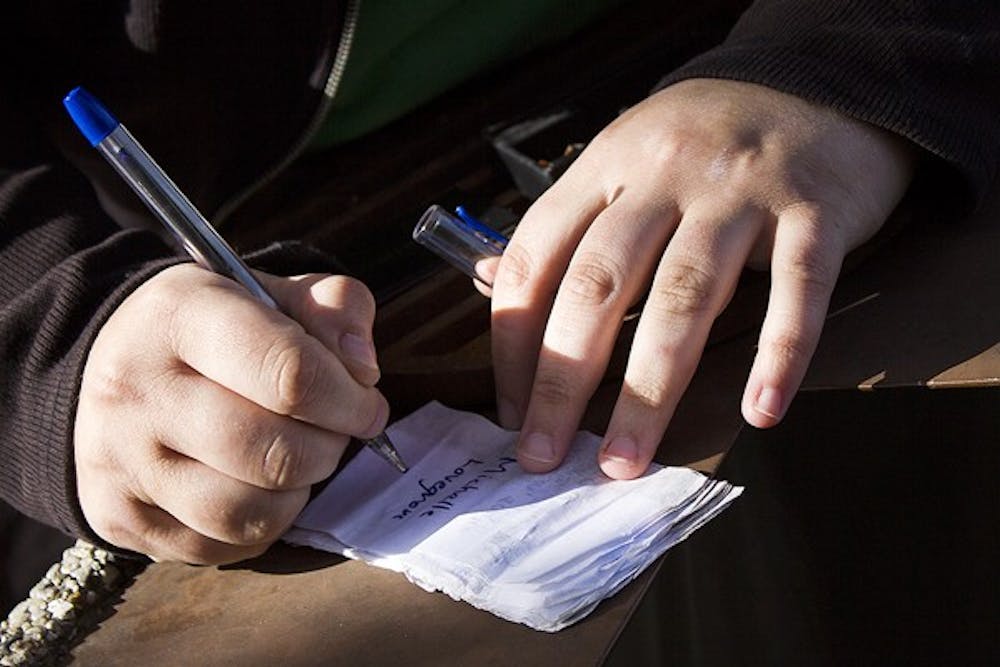Geocaching combines technology and real-life scavenger hunts

Hidden treasure might be right under your nose while walking around campus.
In the activity known as geocaching, the use of a cell phone or similar GPS-enabled device can help you track down containers known as “caches” and sometimes find a surprise inside.
According to website Geocaching.com, geocaching began in May 2000 upon the advent of advancing GPS technology, which allowed even the locating of small items. By hiding a cache — which can have a size varying from an eraser to a large bucket — and logging its coordinates online for others around the world to find, the searching began.
A logbook is listed as the most necessary part of what is in a geocache, which allows those who discover the cache to record their visit. In larger caches, inexpensive items such as pins or coins might be inside for travelers to take and trade something of equal or greater value into the cache.
Finding a hidden cache, even with coordinates, can sometimes be trickier than first expected, as a cache can be hidden in any variety of crevices or nooks within the area.
Williamston senior Jacob Sutherlund recalled one of his own hard-to-find geocaching experiences.
“I was with my friend in East Lansing at a Panera Bread,” Sutherlund said. “She noticed on her phone that there was a cache nearby, so we went ahead and tried to find it for a while. Eventually, we were about to give up, but then we ended up finding it hidden inside a lamppost base.”
Geocaching.com states it has nearly two million cache coordinates registered from all seven continents as well as over 5 million registered users worldwide. A search on the website’s map indicates over 20 caches are located in the area immediately surrounding campus alone.
Sutherlund has been participating in geocaching since high school. Now he often participates in the activity with registered student organization Geographic Information and Planning Society (GIPS) as a team bonding experience.
“I got into it because it’s fun, and it’s like treasure-hunting,” Sutherlund said.
CMU students in GIPS aren't the only ones who know about geocaching. While she hasn't gone on her first hunt yet, Wyoming junior Michelle Lovegrove became familiar with geocaching while studying on Beaver Island over the summer.
"The director of the biostation at Beaver Island set up a few sites that students would go find," Lovegrove said. "It's a neat concept. It's something you go out and do with your family, and you don't need a whole lot of equipment"




